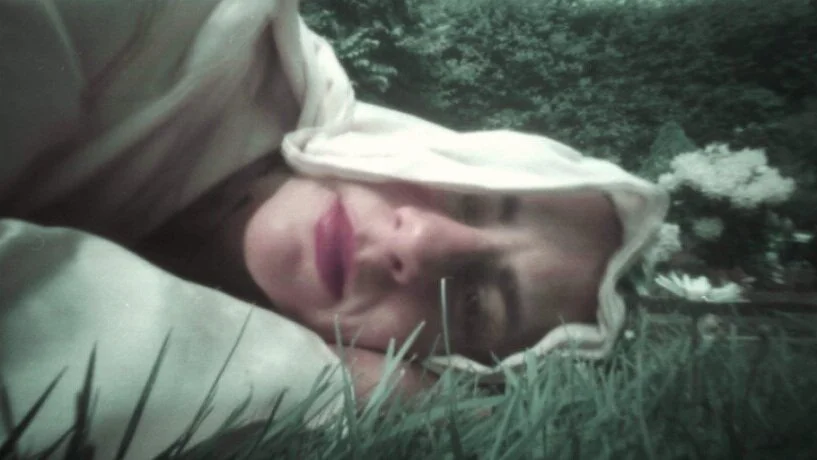Edith Walks
1066 and All That - but not as we've known it before.
The films of Andrew Kötting have become so idiosyncratic that a critic when approaching them is mainly useful in suggesting which ones are the stronger and which the weaker - that's because it all depends on the individual viewer's taste when it comes to their appeal or lack of it. Undoubtedly Kötting's niche is that of an avant-garde artist but without being as far out as some to whom that label applies. Nevertheless, it's fair to say that any description of what is on offer in Edith Walks will sound strange indeed to anyone unfamiliar with his work, while those who know it will at once recognise it as in line with its immediate predecessors.
The Edith of Edith Walks was the common-law wife of King Harold slain in 1066 at the Battle of Hastings. She is reputed to have taken his body parts for dispersal and, in an echo of that, Kötting and five others travel the 80-odd miles from Waltham Abbey, possessed of strong associations with Harold, to St. Leonards-on-Sea, the site of a statue depicting Edith bending over her husband's dead body. The engaging singer Claudia Barton plays out scenes in the guise of Edith, but the travellers, who also include Iain Sinclair known as writer, actor and filmmaker, the musicians David Aylward and Jem Finer and a photographer named Anonymous Bosch [sic], take to the road as themselves. We hear the talk between them but also on occasion involving the novelist Alan Moore: it incorporates much discussion concerning the history of 1066, the legends growing out of that (including the fanciful conjecture that Harold lived on after the battle) and the issue of how relevant such history is to our lives today. Incorporated too is archive footage showing schoolchildren in a reconstruction of the battle.
Several of those involved here also appeared in Swansdown (2012) which again featured a journey and in 2015 By Our Selves found Kötting evoking the 19th century poet John Clare by retracing his steps during another 80-mile walk, this one in 1841. It is that film, in which discussions again played a large part, that shows up the extent to which Edith Walks by comparison throws up so much less either to touch us or to encourage thought. Nor does this film, poetic through it is, seek the photographic beauty to be found in By Our Selves, although the tone of it is no less personal being both serious and playful. But Kötting's style always runs the risk of becoming self-indulgent and it often seems so here. Within the package on offer is a short film by way of introduction, an animated work made by Kötting's daughter Eden. This is Forgotten the Queen which over 11 minutes touches on Edith and 1066 but elaborates on that by taking a wider view of women's role in the world. Visually some images recall Bob Godfrey, but a more relevant influence (and one admirably suited to a child of Andrew Kötting) is to be found in the adventurous short animations of Walerian Borowczyk.
MANSEL STIMPSON
Featuring Claudia Barton, Andrew Kötting, Iain Sinclair, Jem Finer, Anonymous Bosch, Alan Moore, David Aylward.
Dir Andrew Kötting, Pro Andrew Kötting, Screenplay Andrew Kötting and Iain Sinclair, Ph Anonymous Bosch, Nick Gordon-Smith and Andrew Kötting, Pro Des Andrew Kötting and Claudia Barton, Ed Andrew Kötting, Music David Aylward, Claudia Barton, Jem Finer and Andrew Kötting.
Andrew Kötting-HOME Artist Film.
61 mins. UK. 2016. Rel: 23 June 2017. Cert. PG.


